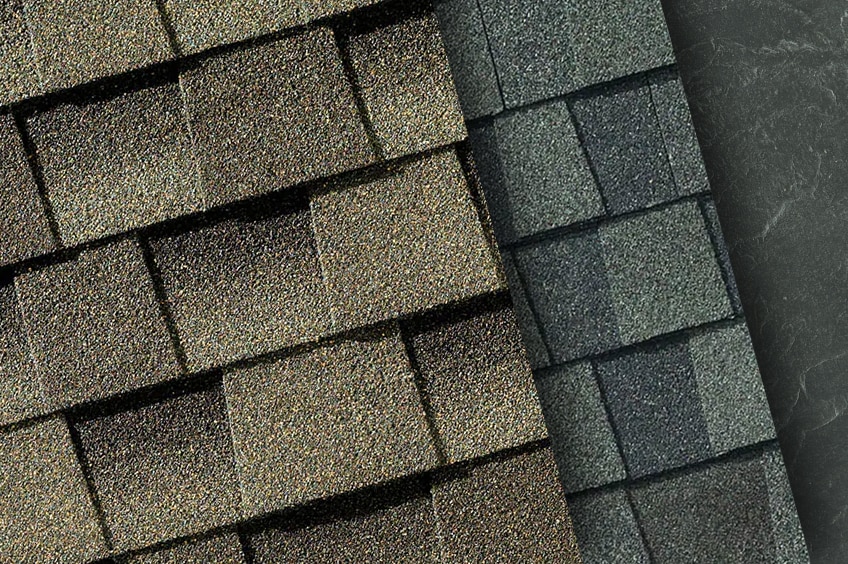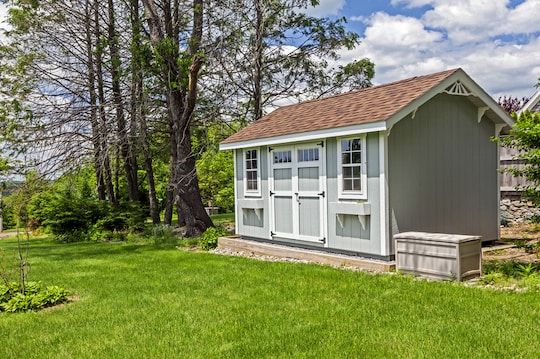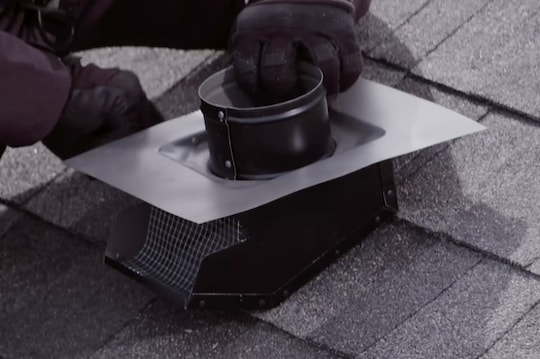
Choosing roofing materials for your home is a big, exciting decision. Beyond keeping your family safe and comfortable, your roof majorly impacts curb appeal. Most roofs occupy 40 % of a home's visual exterior, so it makes sense that you'd want roofing materials that look good!
But there's more to deciding on a type of roofing material than color and design. Your regional climate, local building and fire codes, and budget all matter. Plus, your home construction factors into whether slate tile, clay tiles, asphalt shingles, metal roofing, or another roofing material might be best.
Here, we dive into four of the most common roofing materials to help you make the best choice possible.
Bardeaux d'asphalte
Asphalt is the most popular roofing material in the U.S. In fact, four out of five homeowners choose asphalt shingles. Most asphalt shingles are made from a fiberglass base that's been soaked in asphalt and coated with mineral granules to create a durable roof covering.
There are two categories of asphalt shingles: traditional 3-tab shingles, which are more affordable and built from a single layer, and laminate or architectural shingles, which can be two or three layers. 3-tab shingles are used due to their affordability, but laminate or architectural shingles are more popular due to their durability and greater range of design options.
Here's when to consider asphalt:
- You have architectural roof details with tricky flashing needs.
- You want distinctive color options and a variety of designs that can match the style and aesthetics of your home.
- You prioritize ease and speed of install.
- You want the wood shingle look with high fire and wind resistance. GAF Timberline® HDZ™— North America's top selling shingle has the highest roofing fire rating: UL Class A, Listed to ANSI/UL 790 and meets the industry's toughest wind tests ASTM D7158, Class H and ASTM D3161, Class F. In addition, when installed with the required combination of 4 qualifying GAF Accessories, it qualifies for the WindProven™ limited wind warranty*, the industry's first wind warranty with no maximum wind speed limitation.
Slate Roofs
Slate has a distinctive look that's often associated with high-end architecture and traditional Northeastern homes. Slate is metamorphic rock that's mined and cleaved into thin sheets for roofing. It's typically dark gray, but may be found in other colors depending on where it was mined.
There are three quality ratings for natural slate roofing-S1, S2, and S3. An S1 rating offers the highest resistance to water absorption and weathering, as well as the highest break strength.
Slate tile is attractive and offers natural durability. Here's when to consider slate:
- You want the natural insulation that slate provides
- You love the look and the durability of an S1-rated slate tile like GAF Slateline®
- Your home construction can support the weight of a slate roof
- You want the natural durability that slate offers against the elements
Metal Roofs
Metal roofs come in a range of prices and types. Metal roofs can impart a modern, clean look when done in stainless steel, or lend a period aesthetic when done in copper. You can choose between metal shingles or standing seam metal roofing.
Popular metals include galvanized steel, aluminum, copper, zinc, and stainless steel. The metal you choose impacts your roof's strength and durability. It's important to note that some metal materials can dent easily from weather events such as hail. Here's when to consider metal:
- You want the fire resistance that metal provides
- You want the unique aesthetic of metal
- You don't mind the noise of a metal roof when it rains or storms
- You can invest in a quality metal material that will last
Clay Roof Titles
Clay roof tiles are naturally beautiful and commonly associated with Southwestern and Mediterranean-style homes. Clay tiles come in a range of colors and designs. Although they are traditionally handmade, most clay tiles are now machine-made.
Concrete tiles replicate the look of clay and typically cost less than clay. Clay roofs are hardy and durable, but they can become brittle over time and break more easily than some other roofing materials. Here's when to consider clay:
- Your roof meets the typical slope requirements (2:12 or greater) for clay or concrete tile installation
- Your home can support the weight of a clay tile roof
- You want the fire, wind, and impact resistance of clay
- You love the look of clay tile
- You're able to afford clay roofing
Still have questions about which material will be right for your home? Check out our Virtual Remodeler to see how certain roofing materials and colors will look on your home. When you're ready to get started, contact a GAF factory-certified contractor** to discuss your options and request a cost estimate.
*Pour profiter de la garantie limitée de 15 ans WindProvenMC des bardeaux TimberlineMD avec technologie LayerLockMC, vous devez utiliser les produits GAF suivants : bandes de départ, sous-couches à haute performance, bardeaux de faîtière et membrane d'étanchéité ou ventilation de grenier. Voir la Garantie limitée pour système de toiture afin de connaître l'étendue de la protection et les restrictions. Visitez gaf.com/LRS pour connaître les produits GAF admissibles.
**Les entrepreneurs inscrits aux programmes de certification GAF ne sont pas des employés ou des agents de GAF, qui ne contrôle pas et ne supervise pas ces entreprises indépendantes. Les entrepreneurs peuvent recevoir des avantages, tels que des points de fidélité et des remises sur les outils de marketing de GAF pour avoir participé au programme et offert des garanties améliorées GAF, qui exigent l'utilisation d'une quantité minimale de produits de la marque.



